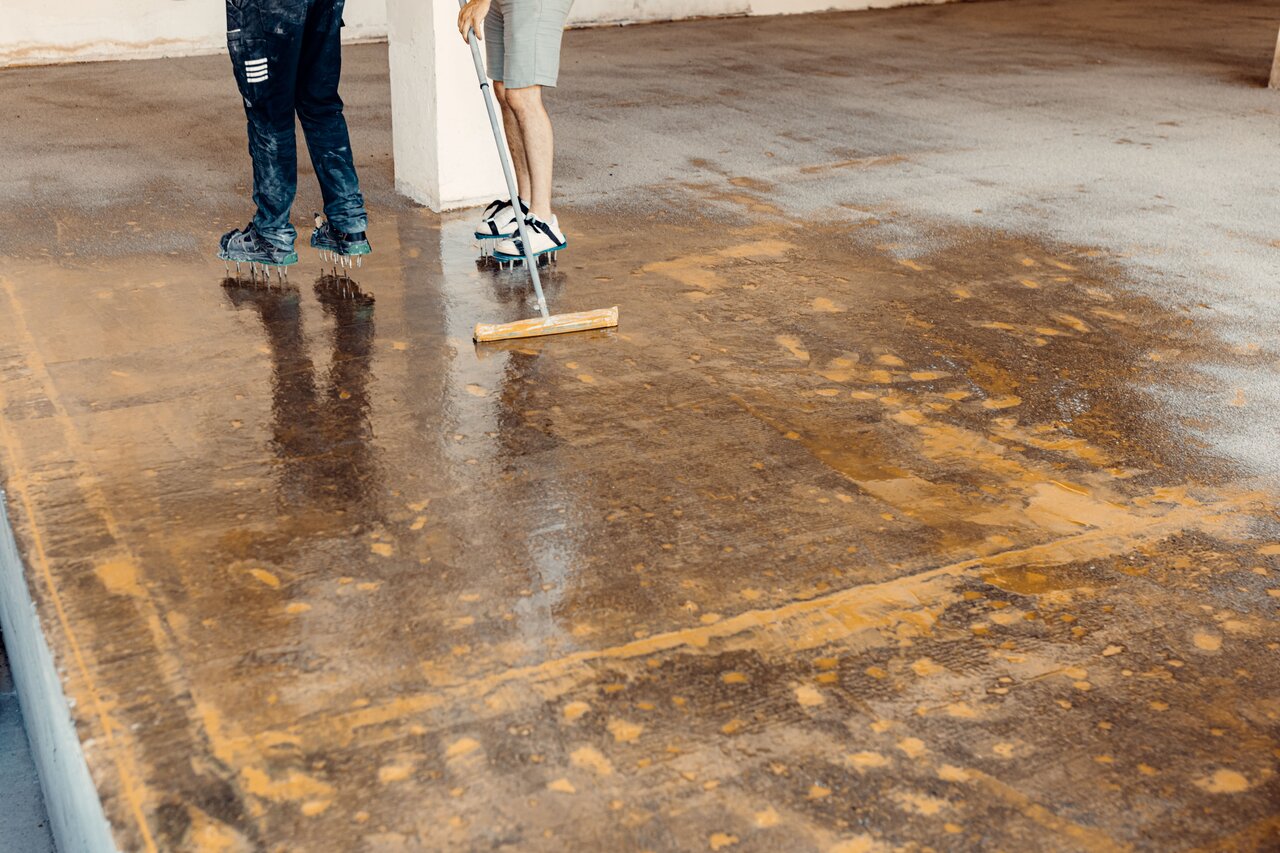The Ultimate Guide to Concrete Staining in 2024

In 2024, the appreciation for functional yet aesthetically pleasing spaces has moved beyond traditional design elements and started to focus on the very framework of our interiors: the floors. As we continue to strive for spaces that inspire and uplift us, an increasing number of homeowners and commercial space owners are investing in enhancing the look of their concrete floors. Concrete staining offers a versatile, affordable, and durable solution to giving your floors a completely new, revitalized look. It is an art form we have honed over the years that involves enhancing the inherent beauty of concrete, turning it into a stunning centrepiece for your space.
In this comprehensive guide to concrete staining, we will explore the various types and techniques available, delve into the process of staining concrete surfaces, and share tips on how to choose the right stain for your space. We will also cover the essential steps to maintaining a beautifully stained floor, ensuring its longevity and lasting impression. By the end of this article, you will be equipped with the knowledge and confidence to embark on a concrete staining journey that reimagines your floors and enchants your senses.
Understanding the Types of Concrete Stains
Before starting your concrete staining project, it’s vital to grasp the different types of stains available. The two primary categories of concrete stains are acid-based stains and water-based stains, each with its unique features and application techniques. Knowing the difference between these two stain types will help you make an informed decision on what would best suit your space and design goals.
Acid-Based Stains:
Acid-based stains are a popular choice for those seeking a distinct, natural look. Made from a solution of water, hydrochloric acid, and metallic salts, these stains penetrate the concrete surface and react with the lime content in the concrete. This chemical reaction produces an array of rich, earthy tones resembling marble and natural stone. Acid stains are known for their ability to create variegated colour patterns, giving each floor a unique character.
Water-Based Stains:
Unlike acid-based stains, water-based stains do not rely on a chemical reaction. These stains consist of acrylic pigments and water, adhering to the concrete surface and creating a more uniform colour. With water-based stains, you have a vast selection of vibrant colours, allowing for greater customization to match your desired aesthetic. These stains are ideal for those seeking a specific colour or looking to create intricate designs and patterns on their floors.
Preparing Your Concrete Surface for Staining
The key to a successful concrete staining project lies within proper surface preparation. Ensuring that your floor is clean, dry, and free of defects will allow the stain to penetrate and adhere to the surface effectively, resulting in a high-quality, long-lasting finish.
1. Inspect and Repair: Begin by closely examining the concrete surface for any visible cracks, chips, or other imperfections. Repair these defects with an appropriate concrete patching product, and allow sufficient time for the repairs to cure before proceeding.
2. Clean the Surface: Thoroughly clean the concrete floor to remove any dust, dirt, oil, or other contaminants that could interfere with the stain’s penetration and adherence. A combination of vacuuming, sweeping, and power washing may be necessary for a pristine surface.
3. Surface Profiling: Acid stains require a slightly porous surface to penetrate effectively. If your concrete is too smooth or has been sealed previously, consider surface profiling methods such as grinding or acid etching to open up the concrete’s pores.
Applying Your Chosen Concrete Stain
Once your concrete surface is prepared, it’s time to apply the stain. Both acid-based and water-based stains require different application techniques, so understanding the process specific to your chosen stain type is crucial.
Acid-Based Stain Application:
– Thoroughly mix and dilute the acid stain according to the manufacturer’s instructions.
– Using a pump sprayer or sponge, apply an even coat of stain to the concrete surface.
– Allow the stain to penetrate the surface for the recommended time, typically 4-6 hours or until the desired colour intensity is achieved.
– Neutralize the acid residue with a mixture of baking soda and water, and rinse the surface thoroughly.
Water-Based Stain Application:
– Mix the water-based stain as per the manufacturer’s instructions.
– Apply the stain using a pump sprayer, sponge, roller, or brush in smooth, even strokes.
– Apply additional coats as needed to achieve the desired colour and saturation, allowing adequate drying time between coats.
Sealing and Protecting Your Stained Concrete
After your desired colour is achieved, it’s time to protect your newly stained concrete floors with a high-quality sealer. The sealer will enhance the colour, protect the surface from damage, and make maintenance easier. Apply the sealer using a roller or brush in thin, even coats, and allow sufficient drying time between coats as specified by the manufacturer.
Revealing the Beauty of Concrete
Concrete staining not only adds visual appeal to your floors but also increases the value and functionality of your space. With the right knowledge, techniques, and professional guidance, you can transform an ordinary concrete surface into an extraordinary design element that reflects your personal style and elevates your space.
Ready to begin your concrete staining journey? Trust our expertise to provide you with insights, assistance, and quality workmanship that goes beyond the ordinary. Reach out to The Garage Guys today, and let’s make your flooring dreams a reality with our concrete flooring solutions.

